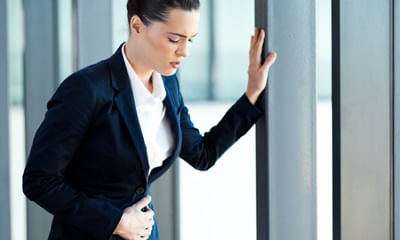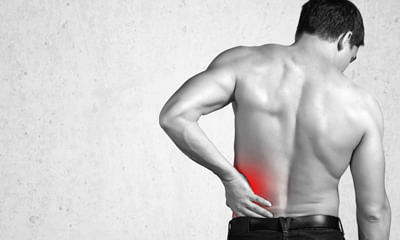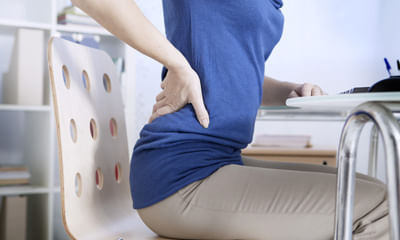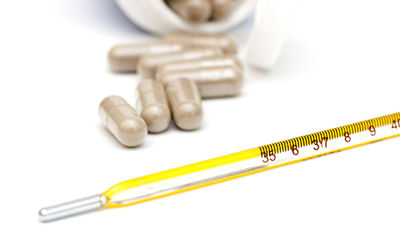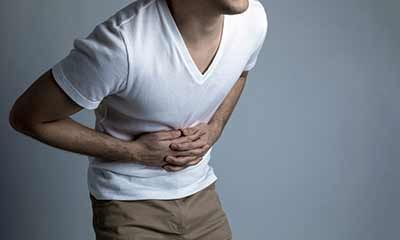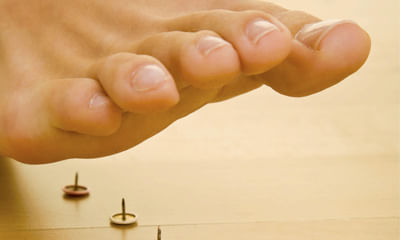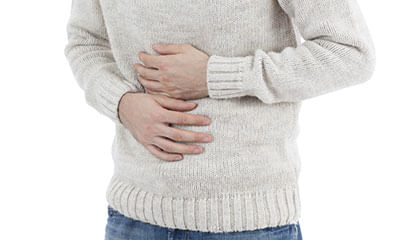What Are The Symptoms Of Irritable Bowl Syndrome
My daughter suffering from ibs (irritable bowl syndrome) she s having cramps in her stomach & pain everyday do you hav a ...
Ask Free Question
Irritable bowel syndrome (ibs) is a common disorder that affects the large intestine. It is characterized by abdominal pain, bloating, cramping, constipation, diarrhea, and gas. Unfortunately, there is no cure for ibs, but there are several treatments available to help manage the symptoms. The treatment for ibs usually involves a combination of dietary changes, stress management, and medication. To manage the cramps and pain, over-the-counter pain medications like ibuprofen or acetaminophen can be used. However, I would strongly recommend consulting with a doctor who can examine your daughter and provide a personalized treatment plan based on her symptoms and medical history. In addition, they may also suggest a high-fiber diet, probiotics, or prescription medications to help manage the symptoms. It is important to remember that ibs is a chronic condition and it may take time to find the right treatment that works best for your daughter. It is also important to keep track of any triggers, such as certain foods or stress, that can worsen the symptoms. If you have any questions or concerns, please do not hesitate to contact me or schedule an appointment with a doctor.
I have severe low back that radiates through legs. Can't even stand or sit for 5 min. Since I have 8 month baby it's rea ...
Ask Free Question
It can be because of sciatica. Do these exercises to relieve sciatica pain url/health/back-pain/sciatic-stretches#sitting-pigeon-pose 1. Reclining pigeon pose— pigeon pose is a common yoga pose. It works to open the hips. There are multiple versions of this stretch. The first is a starting version known as the reclining pigeon pose. If you are just starting your treatment, you should try the reclining pose first. While on your back, bring your right leg up to a right angle. Clasp both hands behind the thigh, locking your fingers. Lift your left leg and place your right ankle on top of the left knee. Hold the position for a moment. This helps stretch the tiny piriformis muscle, which sometimes becomes inflamed and presses against the sciatic nerve, causing pain. Do the same exercise with the other leg. Once you can do the reclining version without pain, work with your physical therapist on the sitting and forward versions of pigeon pose. 2. Sitting pigeon pose— sit on the floor with your legs stretched out straight in front of you. Bend your right leg, putting your right ankle on top of the left knee. Lean forward and allow your upper body to reach toward your thigh. Hold for 15 to 30 seconds. This stretches the glutes and lower back. Repeat on the other side.3. Forward pigeon pose— kneel on the floor on all fours. Pick up your right leg and move it forward on the ground in front of your body. Your lower leg should be on the ground, horizontal to the body. Your right foot should be in front of your right knee while your right knee stays to the right. Stretch the left leg out all the way behind you on the floor, with the top of the foot on the ground and toes pointing back. Shift your body weight gradually from your arms to your legs so that your legs are supporting your weight. Sit up straight with your hands on either side of your legs. Take a deep breath. While exhaling, lean your upper body forward over your front leg. Support your weight with your arms as much as possible. Repeat on the other side. 4. Knee to opposite shoulder— this simple stretch helps relieve sciatica pain by loosening your gluteal and piriformis muscles, which can become inflamed and press against the sciatic nerve. Lie on your back with your legs extended and your feet flexed upward. Bend your right leg and clasp your hands around the knee. Gently pull your right leg across your body toward your left shoulder. Hold it there for 30 seconds. Remember to pull your knee only as far as it will comfortably go. You should feel a relieving stretch in your muscle, not pain. Push your knee so your leg returns to its starting position. Repeat for a total of 3 reps, and then switch legs. 5. Sitting spinal stretch— sciatica pain is triggered when vertebrae in the spine compress. This stretch helps create space in the spine to relieve pressure on the sciatic nerve. Sit on the ground with your legs extended straight out with your feet flexed upward. Bend your right knee and place your foot flat on the floor on the outside of your opposite knee. Place your left elbow on the outside of your right knee to help you gently turn your body toward the right. Hold for 30 seconds and repeat three times, then switch sides. 6. Standing hamstring stretch— this stretch can help ease pain and tightness in the hamstring caused by sciatica. Place your right foot on an elevated surface at or below your hip level. This could be a chair, ottoman, or step on a staircase. Flex your foot so your toes and leg are straight. If your knee tends to hyperextend, keep a slight bend in it. Bend your body forward slightly toward your foot. The further you go, the deeper the stretch. Do not push so far that you feel pain. Release the hip of your raised leg downward as opposed to lifting it up. If you need help easing your hip down, loop a yoga strap or long exercise band over your right thigh and under your left foot. Hold for at least 30 seconds, and then repeat on the other side. For this homeopathic treatment is very effective for more details you can consult me.
I am 28 years female and I am suffering from back pain should I plan for pregnancy? Please help me. ...
Ask Free Question
Because your kidneys are located toward your back and underneath your ribcage, it may be hard to tell if the pain you’re experiencing in that area is coming from your back or your kidney. The symptoms you’re having can help you figure out which is the source of the pain. The location, type, and severity of the pain are some of the things that will be different depending on whether the pain is from a problem in your kidneys or your back. How to identify kidney painkidney pain is most often caused by a kidney infection or a stone in the tubes coming out of your kidney. If the pain is coming from your kidney, it will have these features: where the pain is located kidney pain is felt in your flank, which is the area on either side of your spine between the bottom of your ribcage and your hips. It usually occurs in one side of your body, but it can occur in both sides. Type of pain kidney pain is usually sharp if you have a kidney stone and a dull ache if you have an infection. Most often it will be constant. It won’t get worse with movement or go away by itself without treatment. If you’re passing a kidney stone, the pain may fluctuate as the stone moves. Radiation of the pain sometimes the pain spreads (radiates) to your inner thigh or lower abdomen. Severity of the pain kidney pain is classified according to how bad it is — severe or mild. A kidney stone usually causes severe pain, and the pain from an infection is usually mild. Things that make it better or worse typically, nothing makes the pain better until the problem is corrected, such as by passing the stone. Unlike back pain, it usually won’t change with movement. Accompanying symptoms if you have a kidney infection or a kidney stone, you may also experience: •fever and chills •nausea and vomiting •cloudy or dark urine •an urgent need to urinate •pain when you urinate •a recent infection in your bladder •blood in your urine (this can happen with an infection or kidney stones) •small kidney stones that look like gravel in your urine how to identify back pain back pain is more common than kidney pain and is usually caused by a problem in the muscles, bones, or nerves in your back. Has the following features: where the pain is located back pain can occur anywhere on your back, but it’s most commonly located in your lower back or one of your buttocks. Type of pain muscle pain feels like a dull ache. If a nerve has been injured or irritated, the pain is a sharp burning sensation that may travel down your buttock to your lower leg or even your foot. Muscle pain may affect one or both sides, but nerve pain usually only affects one side. Radiation of the pain nerve pain may spread to your lower leg. Pain from a muscle usually stays in the back. Severity of the pain back pain is described as acute or chronic based on how long you’ve had it. Acute pain lasts days to weeks, subacute pain lasts six weeks to three months, and chronic pain lasts longer than three months. Things that make it better or worse back pain may get worse with movement or if you sit or stand for a long time. It may get better if you switch positions or walk around. Accompanying symptoms other symptoms you may experience with back pain include: •the painful spot looking swollen and feeling tender to the touch •a muscle spasm in the painful area •numbness or weakness in one or both of your legs (if the pain is due to a nerve issue) if you find you have back pain and can’t hold your urine or bowel movements, something is pressing on your spinal nerves, and you should be evaluated immediately. This condition, called cauda equina syndrome, can cause severe long-term damage to your spinal nerves if not treated right away. 6 imbalances that cause pain—and how to fix them "pain is a medical condition and a medical issue, says brett jones, owner of applied strength in pittsburgh who is certified for the functional movement screen, a system of tests and cor rective exercise strategies. "it's a warning sign. The pain is there to tell you something's wrong. And that warning sign could be more serious than "you're going too hard. Jones and the other coaches consulted for this piece all had a horror story to tell-when pain in a client meant a more serious condition such as a nerve issue, thyroid issue, or even cancer. The point: if you experience regular pain while exercising-or when you're not-go to the doctor. If you've been cleared by a doc and you're still feeling discomfort, try these simple tests to see what's truly causing the pain-it could be related to an imbalance in a completely different part of your body. The good news: with these drills, stretches, and corrective exercises, you may be able to fix them-no doctors necessary. Neck pain and headaches? Could be your shoulders. If you're experiencing these symptoms and have been cleared by a doctor, check out the height of your shoulders, says aaron brooks, a biomechanics expert and owner of perfect postures in auburndale, ma. "look in the mirror and see if one shoulder is higher or lower than the other, he says. If one of your shoulders is higher than the other, you'll be strengthening one more than the other, and it may wind up pulled forward more than the other-resulting an inward rotation of that hand. "when you do a row or a press, that side's going to get pinched. There's less room in the shoulder. You can wind up with bursitis or tendonitis. Or headaches and neck pain. Fix it: if the mirror test shows they're uneven, try this single-arm doorway stretch, brooks says. To do it, stand inside the threshold of a door, and place your right forearm inside the door on the right side of the jamb, palm against the jamb at about shoulder height. In this position, twist your chest slightly through the door to stretch your chest-alternately, you can take a step forward with your right foot, keeping your left foot in the threshold. This stretch will open your chest muscles and create room in your shoulder for movement. Pair that stretch with this mid-back strengthening exercise: grab a resistance band and stretch it in front of your chest so that your arms are straight out to the sides from your shoulders, palms facing up. At the full extension of your arms, the band should be stretched out. Return to clap your hands in front, and repeat the movement. Pair these two moves-in this order-three times per week. Shoulders even? Your headaches could be from a forward-leaning head. If you don't see an imbalance in the height of your shoulders, turn to the side, says robert taylor, owner of smarter team training in baltimore. If your head is jutting far forward of your shoulders, it could ultimately decrease the amount of blood flow to your head and neck. "the head leans forward, the spine leans forward, and it puts unnecessary stress on the lower spine too, he says. With the decreased blood flow to your thinking cap, you could get headaches. Fix it: increase blood flow up top and return your head to its natural, up-tall position by strength training your neck, taylor says. Try this one-arm shrug to even things out: sit on an upright bench, like one you'd use for a shoulder press. Holding a dumbbell in your right hand, place your left hand under your left butt cheek and grab the side of the seat. Let your right hand hang down straight by your side and pull your shoulder blades back and together. Now raise your right shoulder up towards your ear-raise it straight up instead of rolling your shoulder. Hold for a beat at the top, and then return to the start position. Complete a set of 10, and repeat on the other side. Knee pain when you run? Could be your hips. "the knee has two bad neighbors-the hip and the ankle, jones says. The pain you feel in your knee could very well be tightness or immobility in those bad neighbors. "they sweep all their leaves into the knee's yard. Everyone blames the knee, but it's the neighbors. To see if your hips have a proper level of mobility, lay on your back in a doorway so that the middle of your kneecap is right on the threshold. Relax your arms at your sides, palms up. Bring your feet together, toes pointed at the ceiling. Pull your toes towards your shins to create a 90-degree angle at the ankle. Keep one leg straight and still as you slowly raise the other leg until either your knee bends on your raising leg, or your bottom foot bends or turns out to the side. "see if the knobby part of your ankle can make it past the door frame, jones says. If it does, your hips are plenty mobile-check the ankle test below to see if that's causing some knee issues. If either ankle can't make it, foam roll your hips and glutes, and then work on this stretch using a belt or strap for instant improvement. Fix it: lying in the same position as during the test, wrap a strap or belt around one foot and raise it until you just start to feel a stretch-not to the level where it's all the stretch you can take, but just the beginning of the stretch, jones says. Once here, bring your other leg up to meet it. Return the non-strapped leg to the floor. At this point, you may find that the strapped leg can come up a little higher. When it does, bring the non-strapped leg up to meet it again. Continue until you no longer feel progress in the strapped leg, and switch. Hips moving ok? Check your ankles. If your hips are mobile (and even if they're not), ankle mobility can also lead to knee pain, says mike perry, owner of skill of strength in north chelmsford, mass. Who is certified in the functional movement screen. To see how mobile your ankles are (or aren't), assume a one-knee position facing a wall. Your knees should both form 90-degree angles, and the toe of your planted foot should be about four inches from the wall. In this position, perry says, try to glide your knee over the pinky toe to touch the wall without lifting your heel. If you can reach the wall, your ankle is gliding correctly. If your foot comes up before your knee touches the wall, your calves are "incredibly tight, perry says. Fix it: to help remedy this issue, foam roll your calves and try this variation on that ankle test from brett jones. Assume the same half-kneeling position, and place the point of a broomstick on the pinky toe of your planted foot. Hold the stick so it's touching the outside of your knee. With the stick in this position, keeping your knee from flaring out to the side, glide the knee forward slowly, stopping when your heel leaves the ground. If you perform this as a drill, jones says, you can see as much as half an inch of improvement in the first session. If you feel pain during the drill, stop and consult a physician. Lower-back tightness? Might be your hips. As with knee pain, back discomfort often isn't a back problem at all, brooks says. If one side of your pelvis is higher than the other, it can result in back pain, hip pain, groin pain, or even knee pain. "if you try to do a lunge, the knee on the high side will cave in and the hip will angle inward, brooks says. The repercussions of this change over time can be knee pain, a patella tear, a medial meniscus injury, or hip bursitis. But back to your back-the unevenness of your hips can pull on your lower back, causing that tightness while sitting all day. Fix it: if you notice your hips are uneven, try this hip abduction exercise. Lie on your back with knees bent and feet flat on the floor, hip-width apart (the classic sit-up position). Wrap a small resistance band around your knees so that it's already a little tight while your knees are together. Now press out against the strap to separate your knees until they form a v-shape, holding at the outermost edge of the press for a few moments. This move helps to fix the hip imbalance because "in the lying position, the muscles that are causing the pelvis to be out of alignment are shut off, brooks says. Repeat for 2 sets of 20 reps, 3 times per week. Tail bone pain the lower end of the vertebral column is inflamed and that bone is called coccyx bone and the condition is called coccydynia. The conservative management would be to keep ice in that inflamed area during one time in a day and also to sit in a hot water bowl where the penetration of the heat would help to reduce the inflammation. And to reduce the weight falling on the inflammed surface we suggest patients to use air cushion pillow (also called as doughnut pillow) where in the buttock's weight will not fall exactly on the painful tail bone and that would automatically reduce the pain. For this the best treatment would be to undergo ultrasonic therapy in one of the nearby physiotherapy clinics.
Hi, I have stomach related issue. My have problem of stool. And my problem is aav my stool is thin, sticky and not prope ...
Ask Free Question
Hello, the information you gave can give little idea but you need to work with therapist for best possible result. You have mentioned the history of depression. This can effect body in many ways but I suspect two issues 1. Irritable bowl syndrome (ibs) - digestive system disorder where all reports are normal still the symptoms of digestive disturbance are present. Food malabsorption and loose mptioms are common and generally, stress is the main cause of the changes in the physiology of our digestive system and diet and stress management are main therapy goals if someone is diagnosed with ibs and/or 2. Eating disorders: there are many types of eating disorder we need to evaluate your history in detail to understand which eating disorder like loss of appetite or compulsive behaviour of eating and removing food or other types of symptoms. Anorexia (loss of appetite) can lead to weight loss. And dietitian and psycologist can help you to regain your mental and physical fitness slowly and steadily. Only upon detailed evaluation your therapy will be started so do not delay and visit good team of healthcare experts in your city.
Hello sir. I'm a 22 year old male. Please I beg you to read this completely. From the past 4 weeks, I have the complain ...
Ask Free Question
Hi Lybrate User, Its due to hot temperament of body take chandanadi avleh 10 gm twice a day relief in 5-6 days and for complete cure take it for 60 days only avoid oily and spicy food.
Sir, Problem no-1 I am a field worker. Have to go 8 am every day for working. From arise to bed and before going to file ...
Ask Free Question
YOu have irritable bowel syndrome The cause of irritable bowel syndrome isn't well understood. A diagnosis is often made based on symptoms. Symptoms include abdominal pain, bloating, diarrhoea and constipation. Some people can control their symptoms by managing diet, lifestyle and stress. Others will need medication and counselling.
Sir, Before 1 year, during my bowl moment at night, some blood was going with it. Then after some day I feel extreme pai ...
Ask Free Question
If you are having painless bleeding then it could be a case of 1st degree internal hemorrhoids. And if there is some itching and intermittent pain this could be due to chronic fissure. Diagnosis could not be made just by medical history proper clinical examination is also necessary so it will be better to consult some Ano Rectal Specialist. For further support and appointment you may call reception at Sushruta Ano Rectal Institute.
Hi, In my Right leg I am having numbness sensation due to sitting on chair more than 5 min also. I used to keep wallet ...
Ask Free Question
The piriformis muscle can also irritate the nearby sciatic nerve and cause pain, numbness and tingling along the back of the leg and into the foot Treatment of sciatica pain, low back pain and leg pain from piriformis syndrome, using stretching, exercise, physical therapy, ice and heat. It looks like you are anaemic. If you have back pain after you sit for long hours then it is due to your haemoglobin levels as it is important to check that. Anaemia always leads to the symptoms of being tired and also having back / leg pain though there may not be any pathological reasons for back pain. The lower end of the vertebral column is inflamed and that bone is called coccyx bone and the condition is called Coccydynia. The conservative management would be to keep ice in that inflamed area during one time in a day and also to sit in a hot water bowl where the penetration of the heat would help to reduce the inflammation. And to reduce the weight falling on the inflammed surface we suggest patients to use air cushion pillow (also called as doughnut pillow) where in the buttock's weight will not fall exactly on the painful tail bone and that would automatically reduce the pain.
Suffering from IBS from 1 year need a diet chart helpful for IBS taking rifagut 400, nexpro Rd, liv52ds, nurokind since ...
Ask Free Question
The most common dietary treatment for IBS has been, and still is, a high fibre diet. While this is still a positive recommendation for many patients, especially those who suffer from constipation, some patients will not benefit from an increase in dietary fibre, and in some the symptoms may even worsen. As with any change in diet the increase in fibre should be gradual, involve a variety of fibres and an adequate fluid intake of at least 1.5 litres per day. The major sources of fluid should be water, but dilute tea or juices may be suitable in some patients. Caffeinated drinks such as coffee, and carbonated soft drinks can aggravate symptoms and should be limited, especially in the initial stages of dietary modification. IBS symptoms tend to be increased following large meals, particularly if the meal is high in fat, and if the meal is eaten quickly. It can be helpful to spread the food over 3 meals and 3 snacks per day. Avoid eating quickly and try to relax after a meal. Regular light exercise can also help reduce symptoms. A typical meal plan for IBS sufferers This meal plan provides 25 - 30 g of fibre from a variety of sources and 30 - 35 g of fat depending on the quantity of added margarine, oil and fat content of dairy foods. Breakfast - a bowl of high fibre cereal such as untoasted muesli, weetbix or porridge with fresh or tinned fruit and reduced fat milk or a calcium fortified soy milk and/ or wholemeal or grain toast with minimal margarine and honey or vegemite. Tea. Lunch - sandwiches made with wholemeal bread with low fat cheese, lean beef, tinned fish and salad. Tinned or fresh fruit with low fat yoghurt. Water, tea or diluted juice. Main Meal - water, lean grilled chicken with lemon juice and pepper. Served with salad, boiled new potatoes and wholemeal bread. Snacks spread throughout the day - fresh fruit, low fat yoghurt, crackers with cheese, or wholemeal crumpets with honey. Water, tea or diluted juice.
I am suffering from anxiety disorder and also I am suffering from irritable bowl syndrome. Stomach upset and gas. I go t ...
Ask Free Question
Yes anxiety and ibs are very much related. We haven't concluded whether anxiety is the cause of IBS or IBS causes the anxiety in those pt. But one thing is for sure anxiety worsen infact makes it difficult to cure of this disease. All you need to do is control your anxiety. Do meditation. And relax a bit. Take food in every 4 hrs. With this you need proper homeopathic treatment for cure. If you can continued with homoeopathic treatment you will definitely get some better result. Soo you can contact me through Lybrate. One more thing you need to boost up your confidence level.

